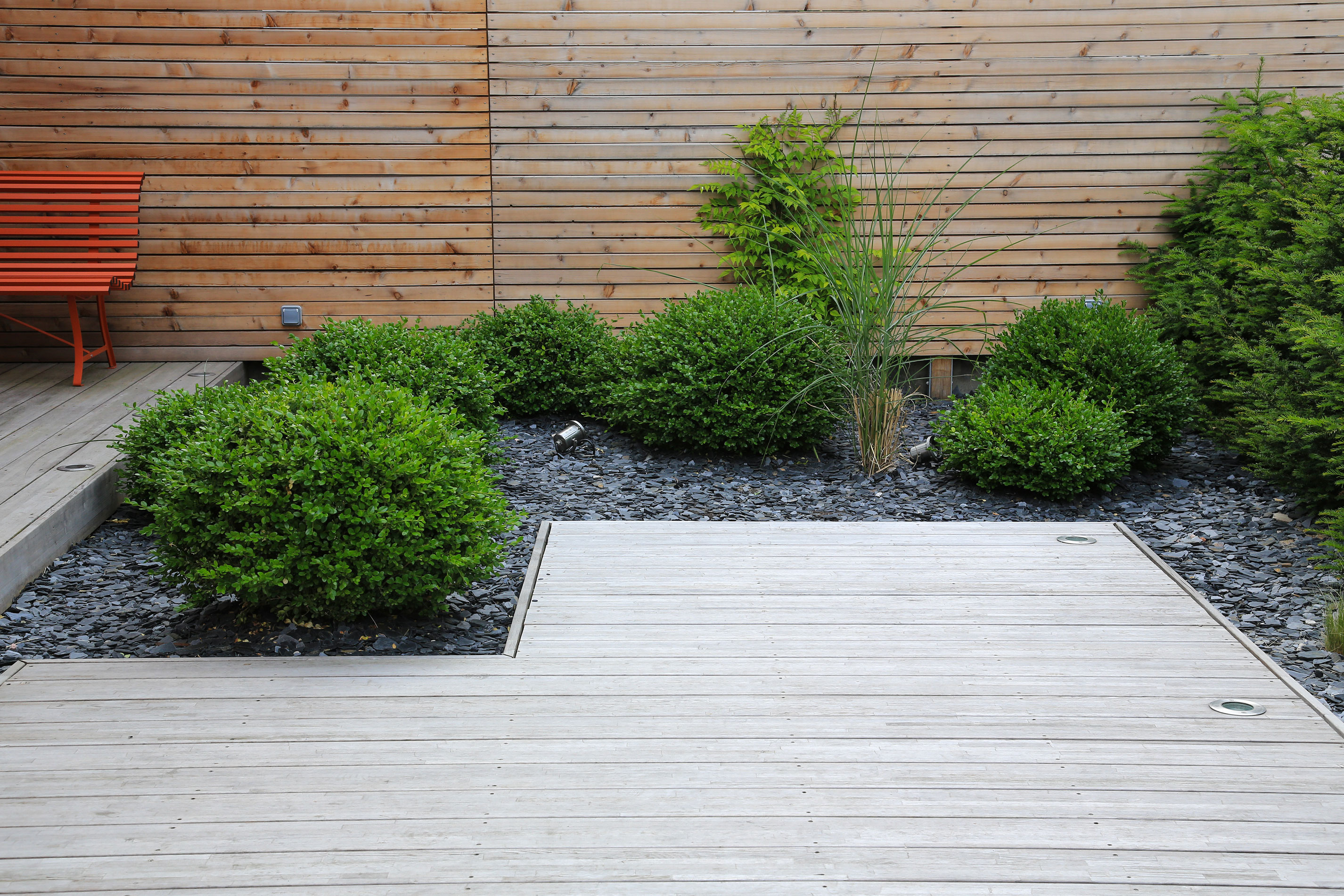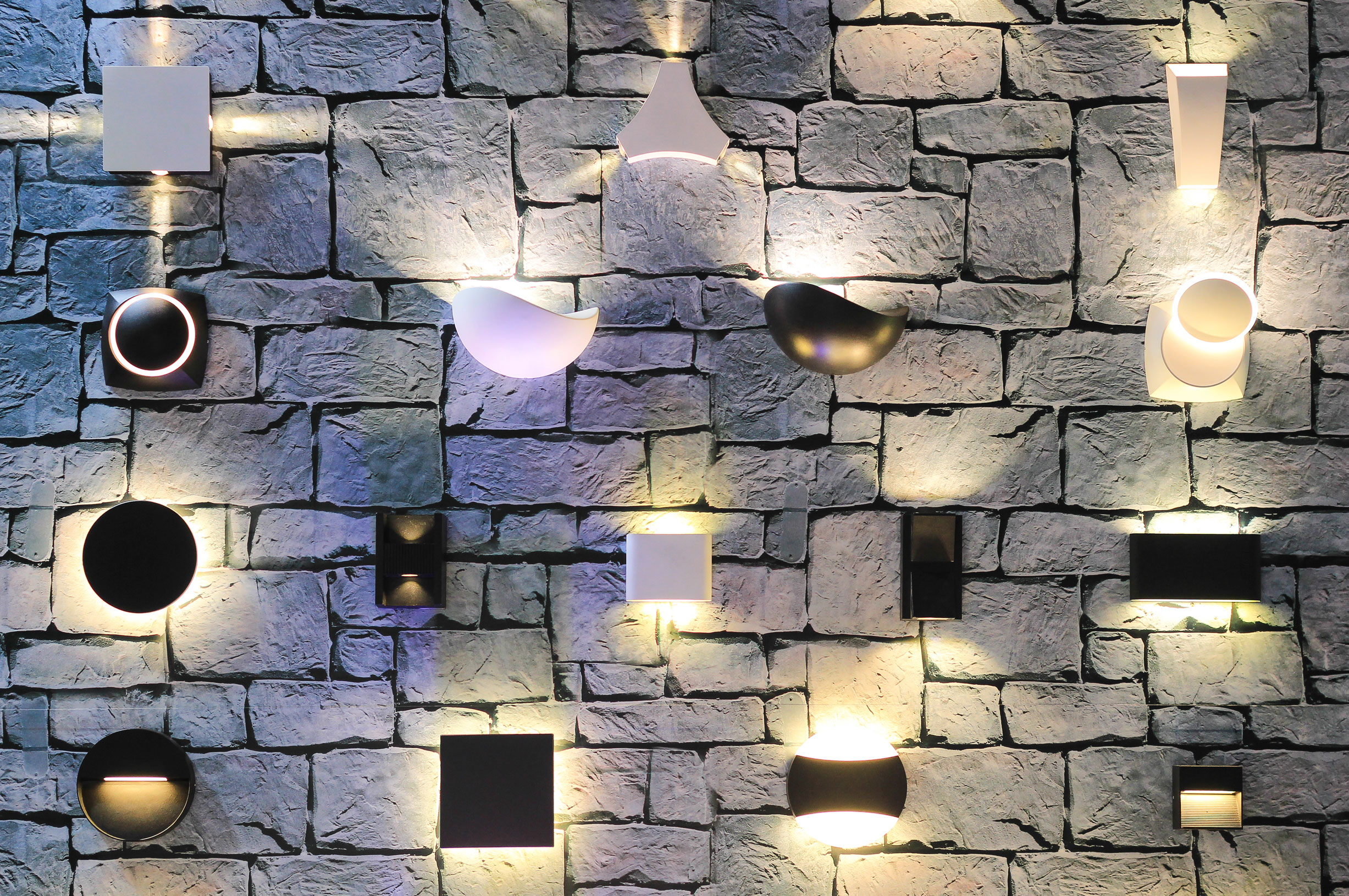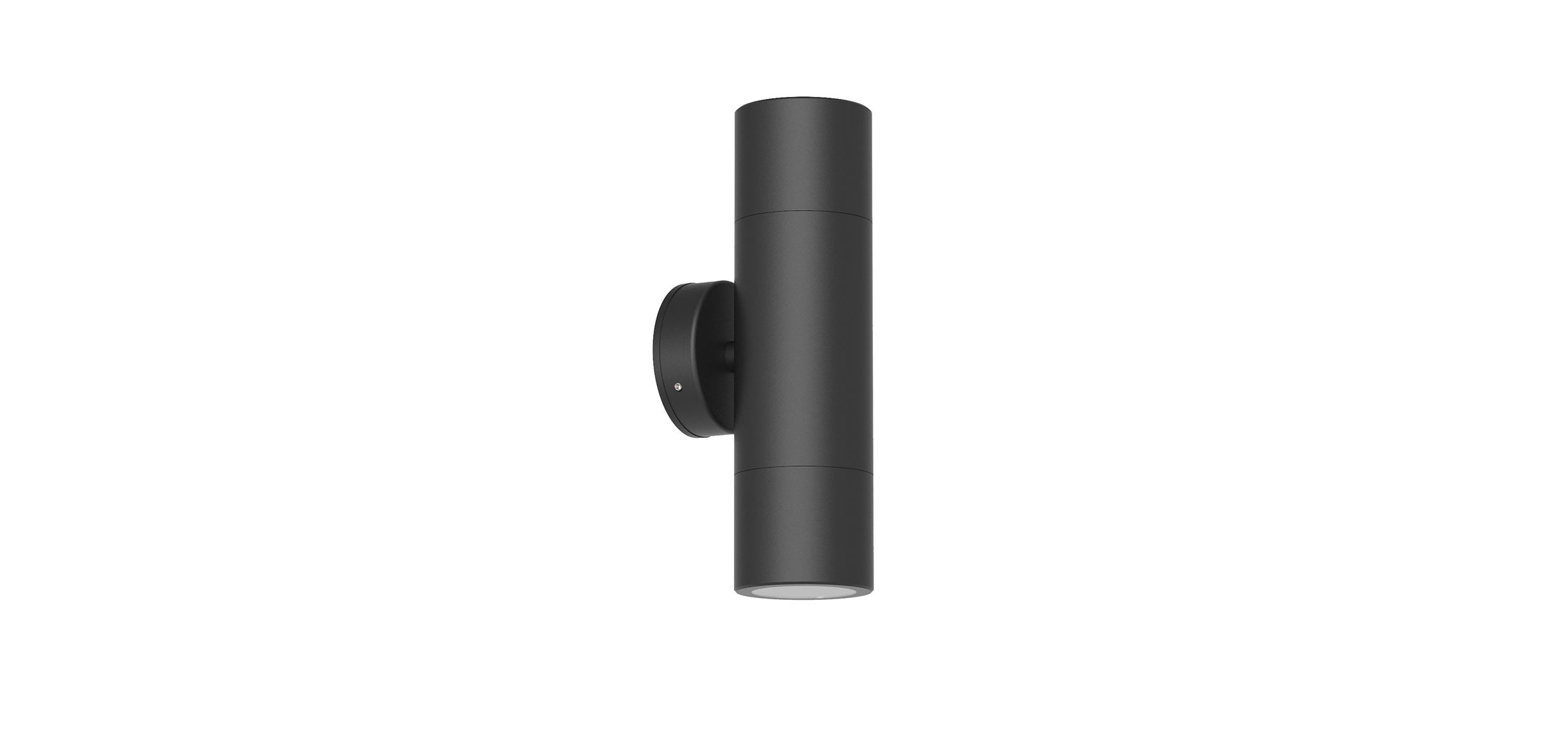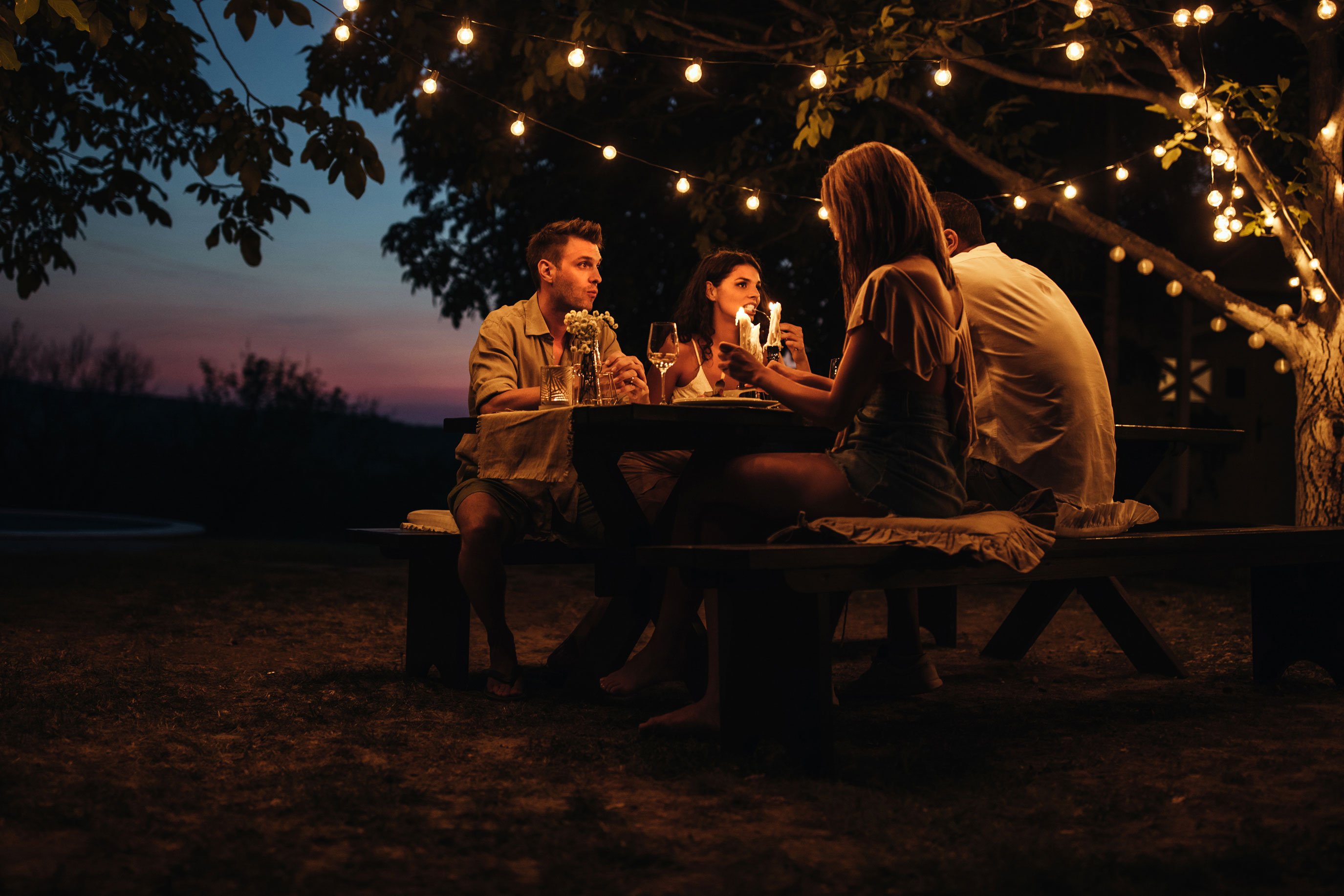Designing a Summer Garden Wall Lighting Plan
There are so many different types of garden lights it can be confusing to know which ones you need. Designing a summer outdoor lighting plan will help you gain clarity on what fitting solutions to install for the ultimate ambience and functionality. In this post, we explain how to assess your garden’s lighting needs and create a plan that’s perfectly tailored to you and your outdoor area.
How to assess your garden’s lighting needs
When assessing your garden’s lighting needs, you should consider the size, layout and features of your garden. Your need will be individual to your outdoor area, and what you use it for, so it’s important to consider this before designing your plan.
The size of your garden will impact how many fittings you need and how bright some of them need to be. However, having a large garden does not necessarily require tons of illumination. It’s important to consider what you want to use your garden for after dark. For example, if you are not playing sports, you do not need a floodlight just because you have a large lawn area. Similarly, if you will not be walking around the entire garden at night, it’s probably unnecessary to illuminate every path or individual aspect of your garden.

The layout of your garden is an important factor when assessing what type of lighting you need. For example, if you have multiple walls facing your garden, you might want to consider more than one wall light for security or access lighting. If you have different zones in your garden, you want to consider different types of fittings for each area according to what it’s used for or what you want to highlight.
If you have many different features in your garden, your garden lighting plan will likely be more complex than that for a simple, smaller garden. You may want to incorporate different types of fittings for functionality and visual effect.
There are four main functions of garden lighting. These are:
Security
Security lighting is designed to prevent intruders from entering your property. An example is a motion sensor wall fixture which comes on automatically when movement is detected. Lights like these deter people from entering a property uninvited because it makes it difficult to move around undetected.
Access
Access lighting is designed to direct people safely around your property. An example of it is a porch light which is designed to illuminate the front entrance of the property and prevent trips or falls on steps or in doorways.
Task
Task lighting is designed to allow certain aspects of the garden to be used at night time. Depending on the need, different types of outdoor lights can be used for task lighting. For example, a wall downlight can be perfect for illuminating evening seating areas. At the same time, ground spikes can illuminate cooking areas for alfresco dining after dark.
Aesthetics and ambience
Aesthetic and ambient lighting is designed to improve the look and feel of the garden at night time and to allow the landscape to be enjoyed and admired after dark. An example of ambient lighting is uplighting which is typically used to accentuate features of a property or aspects such as trees and statues. Different types of outdoor fixtures can be combined to create an ambience and enhance the aesthetics of a garden.
Security, access and task lighting can all be categorised as functional. Aesthetic and ambient can be categorised as mood lighting. You will likely want to incorporate a combination of functional and mood types into your garden plan.
Garden wall lighting options

You can incorporate several different types of fixtures into your summer garden scheme. Different fittings are used for various purposes, so the following information will help you determine the lighting you need for your garden. Here, we will cover the main types of wall lighting and how to combine them for a perfectly tailored outdoor scheme.
Bollard lights
As the name suggests, bollard lights are shaped like bollards. They come in many different sizes, designs and colours and are typically used to illuminate pathways and sometimes driveways. Bollards are ideal for medium to larger-sized gardens with pathways and multiple features.
When choosing bollards it’s important to consider where you want the glow to point. Some of them provide 360-degree ambience, while others have a smaller beam angle. Also, consider the size of your space and whether the bollard will be obtrusive in its placement. Some of them are slimmer or shorter in design than others, so always check the measurements that suit your requirements before buying.
This small bollard light is a good example of a more compact solution which is just 45cm in height, whereas this larger bollard is 100cm in height, making it perfect for illuminating pathways adjacent to plants and shrubs or for larger spaces.
Spike lights
Garden spikes get their name from their design, incorporating a spiked pole mount inserted into the ground, garden bed or flower pot. One of the main advantages of spike lights is that they’re very easy to install. Another advantage is that they can easily be relocated to different garden areas.

Spikes come in many different styles and sizes. Many of them are adjustable so that you can customise the positioning of your glare perfectly. They are versatile and can illuminate lawns and pathways, providing task lighting or accentuating certain plants or garden features. When buying these fixtures, consider where you want to place them and what you want to use them for. Make sure you check the pole size, cable length and beam angle to ensure the one you choose is the right one for your desired use.
This adjustable spike spotlight is ideal for lower-level garden lighting as it has a spike length of 29.5cm, making it perfect for flowerbeds or paths. This long spike has a 1-metre pole and is ideal for placement around larger plants or structures.
Wall lights
Wall lights are outdoor fixtures that are fixed onto the wall. This includes security, access, downlights, uplighting, and ambient lighting solutions. As such, wall washers can serve a wide range of purposes. They can be a great all-purpose illumination solution for smaller gardens, often providing enough glare for functionality after dark.
Various outdoor wall ranges are available in different styles and colours. Some of them are adjustable, such as this wall spotlight, which allows you to customise the positioning. Similarly, this outdoor wall twin is an example of a wall fixture that will enable you to adjust the light in multiple directions.

Wall lights can enhance security and safe access around your property. When choosing wall lights for this purpose, consider whether you want your light to have a motion sensor allowing it to come on automatically when movement is detected. Also, consider how bright you need your ray to be and the required direction of the beam.
Wall lights can also be used for downlighting and uplighting. Downlighting is great for illuminating aspects underneath the light, such as lower-level plants or seating areas. Uplighting is great for illuminating your property’s architectural elements or highlighting features such as trees and statues. Uplighting and downlighting can be combined to create a beautiful visual effect that casts shadows on certain aspects and creates drama and ambience.
This up-and-down wall washer light is a great example of a wall fixture that provides multi-directional illumination.

You can mix and match different types of fittings in your garden to create a functional, aesthetic and cohesive illuminating scheme. As well as various garden fixtures, you can select ones with varying brightness and colour temperature to create a layered glimmer effect in your garden.
Follow the tips in the previous section on assessing your garden’s lighting needs, as well as the following section on creating a plan, as this will help you determine how best to combine different lights in your garden for the ultimate ambience and functionality.
5 Tips for creating a summer garden lighting plan
Creating a summer garden lighting plan is the perfect way to determine what fixtures you need and where to place them. The following tips will explain step-by-step how to create your garden illumination plan.
- Sketch out your garden
Begin by creating a sketch of your garden. You don’t have to be an artist for this, so long as you know what each element is and keep everything as close to scale as possible. Include all the important elements of your garden, such as patio or decking areas, seating areas, ponds or water features, trees, flowerbeds, walls, sheds or summerhouses, cooking areas, plants and grass areas. Your sketch will form the basis of your summer garden lighting plan, which you can expand upon with the next few steps.
- Decide which areas of your garden need illuminating
Using your sketch and your experience of using your garden space, consider which areas need the most illuminating. Are there certain elements in your garden that you would like to highlight? Do you need security lighting in certain areas? Do you need task lighting? Are there certain parts of your garden that would benefit from atmospheric lighting? Indicate all of these on the sketch you created, which is now becoming your lighting plan.
- Decide what type of lighting you need
Now you know what areas of your garden need lighting, the next step is to consider what type you want or need. Earlier, we discussed different kinds of garden lighting. Use this information to consider what you need for each area indicated in your plan. You should consider where to place functional lighting and where to place mood range. Perhaps you want to combine different types for ambience and visual effects, such as brighter and softer types. Indicate the type of lighting you need for each area on your plan.
- Consider the direction of each light point
Before investing in garden lighting, it’s a good idea to consider the direction the light needs to face to achieve your desired effect. Since you have already determined where your lighting needs to be and the type required, this step should be fairly simple. On your plan, sketch or colour the direction of the beam necessary for each area. Consider how much glare is needed in each space for its intended purpose, which will help you decide which lights to buy.
- Create a garden lighting shopping list
Now you know what type of lighting you need, where you want to place it, and the direction it needs to face, you are ready to create a garden lighting shopping list. You may also want to research to get an idea of the options available. There are many different choices for outdoor lighting, with various sizes, colours and styles available for each type of light. Consider what style of lighting you want and how bright it needs to be, as well as the required beam angle or whether you need adjustable lights. Once you have a shopping list, you can use this to shop around for the best styles and prices.
Enjoy your garden

Follow the guidance in this article to help you assess your garden’s needs, create a tailored garden lighting plan and choose the perfect outdoor lights for your needs. We hope you enjoy your perfectly illuminated garden this summer!
Recent Posts
-
Why Premium Switches & Sockets Matter More Than Ever in 2026’s Curated, Layered Interiors
In 2026, interior design is embracing a new level of subtle sophistication, a design language built …4th Dec 2025 -
Human‑Centric & Tunable LED Downlights: Lighting That Adapts
Lighting has evolved far beyond simply brightening a room. Modern illumination is now about shaping …28th Nov 2025 -
Final Touches That Make a Statement: Why Designers Should Treat Switches and Sockets as Key Elements in the Room
In the world of interior design, it’s often the finishing touches that elevate a space from ordinar …13th Nov 2025




